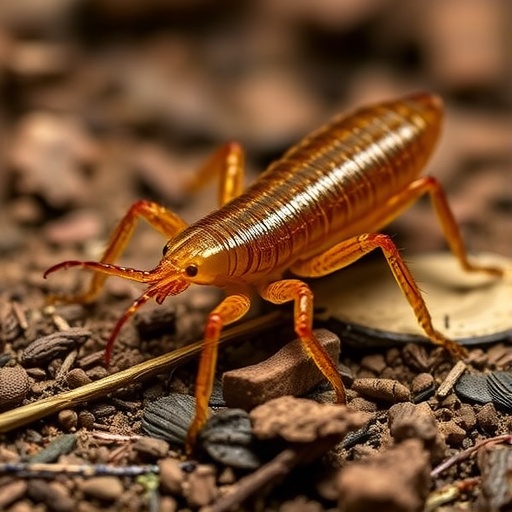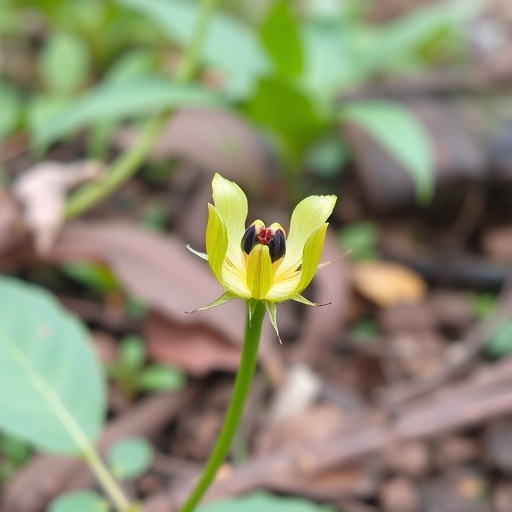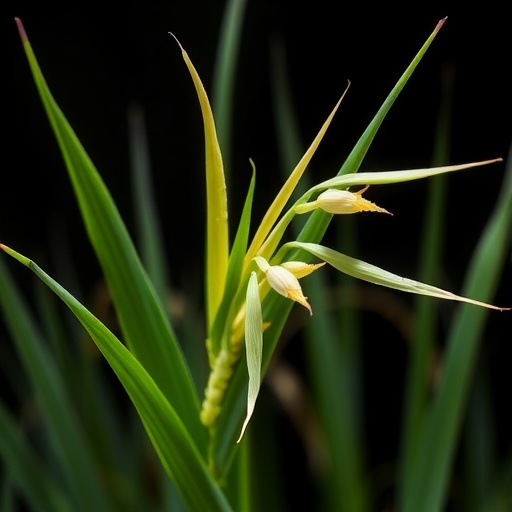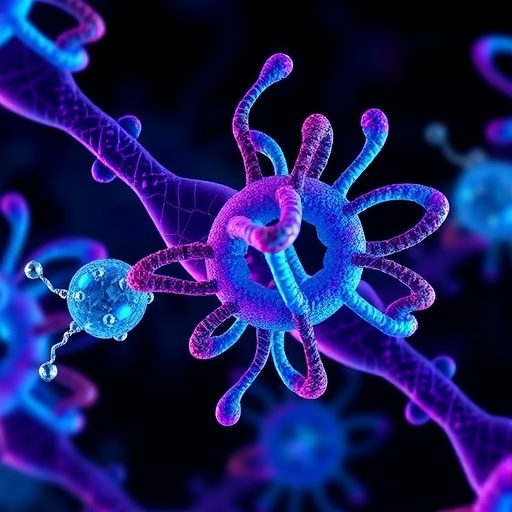PROTECT YOUR DNA WITH QUANTUM TECHNOLOGY
Orgo-Life the new way to the future Advertising by Adpathway
In an exciting revelation for the field of zoology, researchers Barutia and Sombke have unveiled impressive findings regarding the house centipede, Scutigera coleoptrata. Their study, published in the journal Front Zool, offers a groundbreaking perspective on the centipede’s unique capabilities for explosive regeneration and its unusual form of leg development. This research not only broadens our understanding of these fascinating creatures but could also inspire new avenues for biological study within the fields of regenerative medicine and evolutionary biology.
The house centipede, known for its elongated body and numerous long legs, occupies a unique niche in terrestrial ecosystems. It typically preys on insects and other small arthropods, earning its reputation as an agile predator. One of the most striking aspects of the centipede’s biology is its capacity for rapid leg regeneration. This regenerative ability is particularly fascinating, as it challenges traditional ideas of cellular differentiation and development across species. The researchers highlight how understanding these processes in Scutigera coleoptrata could serve as a model for exploring regenerative phenomena in other organisms.
In their work, the authors examine two key aspects of the centipede’s development: its explosive regeneration capabilities and the peculiar anamorphic development of its legs. Explosive regeneration refers to the phenomenon in which an organism can regenerate lost body parts at an astonishing rate. For centipedes, this can occur after losing legs due to predation or environmental hazards. The process not only replenishes lost limbs but also seems to improve locomotion efficiency and survivability, enhancing the centipede’s ability to navigate its environment effectively.
The term “anamorphic development†adds another layer of intrigue to the study. In this context, it refers to the way Scutigera coleoptrata develops its legs. Unlike many insects that develop their appendages in a more linear fashion, house centipedes exhibit a unique form of progressive development. This process challenges previously held notions of how arthropods grow and develop, illustrating a more dynamic and perhaps adaptive approach to limb development.
The research team utilized advanced imaging techniques alongside traditional morphological assessments to analyze regenerating limbs at various growth stages. This sophisticated approach allowed them to document the cellular and molecular changes that occur during regeneration and to observe how leg development differs across varying ontogenetic stages. The findings suggest that while older legs follow a seemingly fixed developmental pattern, newly regenerated limbs display a remarkable plasticity and adaptability, possibly responding to environmental cues.
There are significant implications arising from this study. Understanding the molecular pathways involved in the regenerative processes of Scutigera coleoptrata could enhance our comprehension of similar mechanisms in higher organisms, including mammals. For instance, the challenges surrounding limb regeneration in humans have long been a topic of research, as scientists look for ways to mimic the regenerative capabilities observed in lower vertebrates and invertebrates.
Moreover, the notion of explosive regeneration could offer insights into stress response mechanisms across taxa. Centipedes experience predation pressure, and their evolutionary leap in regeneration might be a response to this selective pressure. This dynamic could teach us about ecological interactions and evolutionary biology, emphasizing how organisms can adapt morphologically and functionally over relatively short evolutionary timescales.
Barutia and Sombke also delve into the hormonal regulations linked to regeneration and development within Scutigera coleoptrata. The study posits that neurohormonal control systems are likely responsible for directing regeneration and leg growth, with potential parallels being drawn to similar systems in vertebrates. By elucidating these hormonal pathways, researchers might eventually unlock novel strategies for promoting wound healing and tissue regeneration in human medicine.
Furthermore, the authors discuss potential future studies that could branch out from their findings. For example, comparative analysis of different centipede species might reveal whether explosive regeneration is a common trait amongst all centipedes or specific to certain lineages. Such research could deepen our knowledge of evolutionary processes and adaptive strategies in arthropods.
The popularity of the house centipede among entomologists and the general public might also play a role in advancing these studies. People’s fascination with this peculiar creature, often seen scuttling across floors and hiding in dark corners, contributes to increased awareness around insect conservation and ecological health, both of which are critical in our changing environment.
In conclusion, the findings presented by Barutia and Sombke add significant depth to our understanding of Scutigera coleoptrata. Their exploration of explosive regeneration and anamorphic leg development not only highlights the remarkable biological capabilities of centipedes but also opens pathways for future research in regenerative biology and ecology. As scientists continue to unravel the complexities of regeneration, it is likely that we will see new breakthroughs that could ultimately transform our understanding of biology and impact medical research profoundly.
Such studies remind us that even small creatures, like the house centipede, hold vast secrets of nature that have the potential to revolutionize life sciences and medicine. With ongoing research fueled by curiosity and technological advancements, the relationships between our species and the ecosystems we inhabit become clearer, emphasizing the need for understanding and preserving biological diversity.
Subject of Research: Biological regeneration and leg development mechanisms in Scutigera coleoptrata.
Article Title: Explosive regeneration and anamorphic development of legs in the house centipede Scutigera coleoptrata.
Article References:
Barutia, I., Sombke, A. Explosive regeneration and anamorphic development of legs in the house centipede Scutigera coleoptrata.
Front Zool 21, 23 (2024). https://doi.org/10.1186/s12983-024-00544-0
Image Credits: AI Generated
DOI: 10.1186/s12983-024-00544-0
Keywords: Centipede, regeneration, anamorphic development, Scutigera coleoptrata, biology, evolutionary processes.
Tags: Barutia and Sombke research findingscellular differentiation in regenerationecological role of house centipedesevolutionary biology insightsgroundbreaking zoology studieshouse centipede researchpredatory behavior of centipedesrapid leg regeneration in centipedesregenerative medicine applicationsScutigera coleoptrata biologystudying regeneration across speciesunique leg development in arthropods


 3 hours ago
13
3 hours ago
13





















 English (US) ·
English (US) ·  French (CA) ·
French (CA) ·